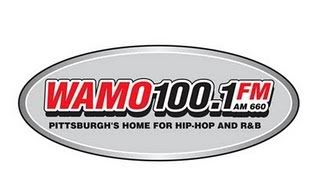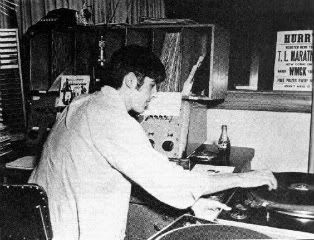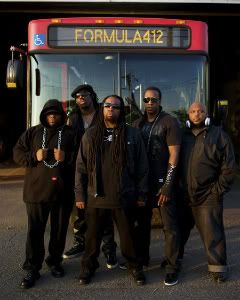Canonsburg is a small borough of about 9,000 souls, located in Washington County, eighteen miles southwest of Pittsburgh. It was laid out by namesake Colonel John Canon in 1789 and incorporated in 1802. The town is famous culturally for its Oktoberfest, Fourth of July parade, and proud musical heritage.
And with a roster of music-makers from the big time to local heroes like those listed below, why wouldn't they be?
Pierino "Perry" Como: Yes, he started in a barber shop and was quite good at snipping hair, too. Fortunately for the music world, he found something that he was even better at. Como had 14 Number One hits on various lists and 48 songs that charted. He hosted the Kraft Music Hall and specials galore on TV.
Como was honored with five Emmys, a Christopher Award, and shared a Peabody Award with bud Jackie Gleason. He was inducted into the Academy of Television Arts & Sciences Hall of Fame in 1990 and received a Kennedy Center Honor in 1987.
After he passed away in 2001, Como received the Grammy Lifetime Achievement Award, and was inducted into the Long Island Music and the Hit Parade Halls of Fame. Como has three individual stars on the Hollywood Walk of Fame for his body of work in radio, television, and music. And as highly regarded as he was in musical circles, he was more highly thought of as a true gentleman.
Canonsburg honored him with a statue and Perry Como Avenue.
Bobby Vinton (Vintula): His dad Stan was a popular local big band leader and got his son rolling on the music track. Good move; after a sluggish start, Vinton went on to record four Number One tunes and had 28 songs that charted in the Top Forty.
He's also the Canonsburg link to
The Tempos of "See You In September" fame. Vinton sang with Clairton's Mike Lazo and Gene Schacter as the Hi Lites in the mid-fifties. Lazo and Schacter went on to form the Tempos when they returned from the Army in 1957. Vinton sang briefly with them again before they went their separate ways.
The town fathers named Bobby Vinton Boulevard and Drive after the Polish Prince. He vetoed a statue, insisting that the money be spent on something the town needed. It took a while for the street names to get the OK, though. Earlier attempts to name a residential road for Vinton were scrapped because some of the homeowners were honked that Vinton called Pittsburgh rather than Canonsburg home!
The Four Coins: Jimmy Gregorakis, George Mantalis, and the brothers George and Jack Mahramas formed the smooth vocal group. They started as part of Bobby Vinton's "Band of Tomorrow" and later became the Four Keys.
As the Four Coins, the quartet charted five Top Thirty songs, led by "Shangri-la" at #11. Their other hits were "My One Sin," "The World Outside," "Memories of You" and their first breakout song "We'll Be Married." They were also well-known for performing ethnic Greek and Italian tunes.
The Four Coins caught their break when local band leader Lee Barrett took them to Cincy to audition for General Artists, which got the ball rolling for them. They left show biz in 1970 to take care of their families, though they did briefly reunite for two final shows in 2003 at the Pepsi Roadhouse and pop up on rare occasion for PBS specials and the such.
Four Coins Drive was named after the group.
Gregg Kostelich: Kostelich is the guitarist for the garage punk rockers The Cynics and famous for his fuzzy riffs. The hard-touring band has been together since 1984 and is an overseas favorite. He got his start playing for a local outfit called Cottonmouth.
Kostelich founded the local label Get Hip, which of course issues the Cynics and other edgy bands, but also has done a great job of preserving the old acts through its Archive Series. He does business in a contrarian way; no big box retailers for his releases. Get Hip wax is only sold at the indie stores as part of his passion for music and insistence that each release get individual attention.
Chuck Edwards (Edwin): The jazz/R&B player moved to Canonsburg in 1959 or so. He took a day job in the mill, with club and session gigs filling the night. He was a popular local performer with several regional favorites on wax, and hit it big with "Bullfight" in 1966. It was taped at Gateway Studios and first released on his own Rene label, to be later picked up by Roulette for national distribution. His 1968 song "Downtown Soulsville" became a huge Northern Soul record across the pond.
In 1972, he and the clan Edwards moved to the coast, where the family released some tunes as the Edwards Generation in the mid-seventies. Chuck passed away outside San Jose in 2001 in Pittsburg, California.
Phil Lipari: The Canonsburg native was the featured vocalist on Chuck Edward's first Rene release, singing "Please Come Back" b/w "Later For You Darling," issued in 1962.
Joey Powers (Ruggierio): Look up "one hit wonders" and "Midnight Mary" always pops up. It was recorded by Canonsburg's Joey Powers on Amy Records, and charted at #10 in 1963-64. While he didn't produce any more hit records, the Joey Powers Flowers were a hot and very much in-demand group in the Jersey/Philly area clubs for years.
He first recorded under the name Joey Rogers, and his initial career was given a boost by Perry Como. The last rumored 411 on Powers is that he's a missionary in Russia, operating a Christian recording studio.
Jason Walker: Known for his soulful vocals, Walker scored a #1 track on the Billboard Hot Dance Music/Club Play chart in 2004 with "Foolish Mind Games" and in 2005 with "Set It Free." Walker cracked the Top 10 three other times, with "My Life" (#3), "No More" (#5) and "Movin' On" (#7).
He's now based in Brooklyn.
Four Townsmen: The group got together as Canon-Mac high school mates in 1959, and had a pair of local hits with “Sometimes (When I’m All Alone)” and “It Wasn’t So Long Before (Graduation Is Here)” on Odell Bailey's Art-Flow Records label in 1962.
The original members were Chuck Marshall, Bobby Kraushaar, Lou Gadani and Pete Kouklakis. Marshall passed away in 1985, Kraushaar retired, and Gadini and Kouklakis, along with Eric Bruce and Pete Povich, reformed the group in 1999. They're still performing a revue with a backing band and have a trio of CDs out.
Donnybrooks: John Alterio, Ken Paige, Frank Trebel, and Bob Kobert, Third Ward School classmates, started as the Phaetons in 1954, guided by their grade school music teacher Lou Popiolkowski. The group entered a talent contest with KDKA Radio as The Four Pals (one story has them named after DJ Art Pallan, but Frank Trebel says "...we selected the name 'the Four
Pals' because we were four real friends and pals." Cool!) in 1958, winning a recording contract with Calico Records.
Their first record, "Everytime We Kiss," was a big local hit under the new name of the Donnybrooks. The group traveled the East Coast and performed as part of the regional club circuit on the strength of that song. They cut two records with Calico Records, (four songs) Three were
written by Popiolkowski and one, "Mandolins of Love" was written by
Tony Ambrose, another Canonsburg song writer.
After their breakup in 1960, only Kobert continued in the industry, recording for Alanna and Souvenir Records as Bobby Shawn and still performing locally.
Vic DaPra: DaPra made a local name for himself as the lead singer and guitarist from 1972 to 1984 for Sugarcane, which opened for Joan Jett at the Stanley Theater. Now he's more known for his expertise with guitars. He's co-owner of Guitar Gallery and a collector of old axes.
DaPra received the ultimate honor when Gibson named a guitar for him, the Vic DaPra Bourbon Fade, a reissue of a 1959 Les Paul model. He's also written a pair of highly regarded guitar books, "Burst" and "Sunburst Alley." DaPra is a 1970 Canonsburg Hi grad and Gregg Kostelich's cousin.
Big Guns: Jay Kasper, Mike Touville, Mark Knapp and Don Pruse form Big Guns, a country rock band that's had some national exposure and radio play, opening for Hank Williams Jr., Travis Tritt, Willie Nelson, Kenny Chesney and a whole slew of country acts. Around since the mid-nineties, the group tours mainly in the east and south, and regularly play many of the local country festivals.
They were named as the area's "Best Country Band" from 1996-98 by various local publications, and their latest CD is called "Bang."
Antoinette (Manganas): She may not have broken out yet, but the jazz/R&B vocalist has made quite a name for herself in the regional clubs (she started out at Deja Vu). Antoinette has a CD titled "Crush" out and is working on another. She suffered an early career setback when her first album went unreleased after her indie label went belly up, so she's making up for lost time.
But hey, how can you bet against her? Antoinette was raised on Perry Como Avenue and opened for both the Four Coins and Bobby Vinton. There's a whole lotta good hometown mojo working for the lady.
The bandleaders: We've mentioned
Lee Barrett, who led his own Orchestra, and
Stan Vinton (who also played in the Canonsburg Italian Band with Perry Como). There was a third bandleader that was popular in the area, and that was
Lee Kelton, who for a brief period had radio DJ Art Pallan as his singer.
Bluesman
Louisiana Red (Iverson Minter) also spent a little time in Canonsburg as a ward of his aunt and uncle. However, all he recalls from that spell was beatings from his unc, paddlings at school and a stint in a reformatory. So hey, maybe that's where he first caught his lifelong case of the blues.
Canonsburg touts itself as "America's Small Town Music Capital" on its web site. And they sure won't get an argument from us.
(There's a lot of talent from Canonsburg, so if we missed some acts, rest assured it's just an oversight. Google and a couple of phone calls usually don't cover all the bases. Please let us know of any other town musicians we may have missed. And Old Mon gives his sincere thanks to music writer and historian Dave Sallinger for calling on his network to help whip this post into shape.)
















